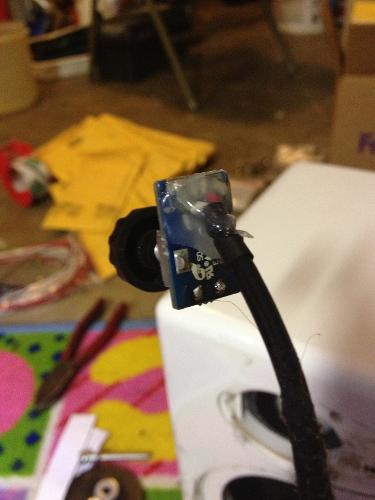First, i would like for you to calm down.
It's not the end of the world.
Losing a resistor would prevent the signal from passing, as there are no jumpers there (wire connecting one side to the other).
Thanks for the picture, but you should of sent me a picture of the actual spot that fell out, that way i can find it on my own speakers, and help you measure the resistance and tell you what to buy.
The reason why your multimeter shows 2,200-2,300 was because your set value was 20K measurement, which was far from the value of that capacitor, so reading was off.
It could also have been that multimeters generally degrade over time, and would need re-calibration.
Honestly, i think it could of been "2201" and not "2202".
Reason being, your measurement was 2.2 or 2.3 on a 20K scale which is a 2.2K estimate.
2201 is the code for a 2.2K resistor.
2202 is the code for a 22K resistor.
202 is the code for a 2K resistor.

If the resistor was big enough to fit 4 codes, it would be a 0805 or 1206.
I say you get a 2.2K resistor in SMD size 0805 and 1206 (just to be sure).
No need to contact Audioengine, this is a very easy fix my friend.
Just because it was placed next 22K resistors, doesn't mean it will be a 22K resistor.
It's ideal to replace it with the exact or near value.
You shouldn't go wrong with replacing it with 2K or 2.2K, but since you measured it and it proved to be 2.2K, then get a 2.2K resistor.
If you're still unsure, just tell me where it is, and i'll measure my own and tell you the size and where to buy it online.
Online:
http://www.ebay.com/itm/100x-SMD-Chip-Surface-Mount-0805-Resistor-2-2k-ohm-222-/120823595088?pt=LH_DefaultDomain_0&hash=item1c21a5c050
If you live in the U.S., simple drive down to Radio Shack or anywhere like Fry's Electronics, they should sell resistors.
Find a 2.2K in the appropriate sizes i said above, or how large you saw it is and buy it.
When you solder it, first place it down where ideal, use a flat head screwdriver to push down on it, that way when the solder gets wet, it doesn't move the resistor.
Don't flow it for too long, as the metal ends can come out pretty easily if done too long.
After you're done, try it again.
If you still hear no sound, check for loose capacitor/resistors/ripped wires.
Tim






















